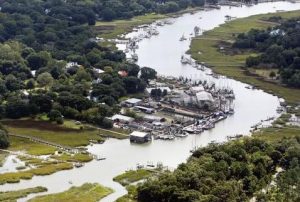Tag Archives: fishing vessel safety
Canada, Nova Scotia move to improve fishing vessel safety
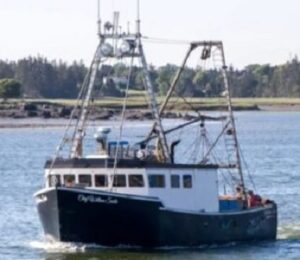 On the eve of the most lucrative fishery in Canada, federal and provincial authorities are ramping up fishing vessel inspections in Nova Scotia seeking proof of safety procedures and annual inspections of hoists and other lifting devices. Lobster season in southwest Nova Scotia opens in two weeks. Some of the increased scrutiny is being attributed to the sinking of the Chief William Saulis, a scallop dragger that went down in heavy seas near Digby in December 2020. All six men on board died. Transport Canada has served notice that its marine inspectors want to see written safety procedures on board and proof crew members are familiar with them. “Failure will result in a deficiency notice or detention of the vessel,” says spokesperson Sau Sau Liu. Video,>>click to read<< 07:08
On the eve of the most lucrative fishery in Canada, federal and provincial authorities are ramping up fishing vessel inspections in Nova Scotia seeking proof of safety procedures and annual inspections of hoists and other lifting devices. Lobster season in southwest Nova Scotia opens in two weeks. Some of the increased scrutiny is being attributed to the sinking of the Chief William Saulis, a scallop dragger that went down in heavy seas near Digby in December 2020. All six men on board died. Transport Canada has served notice that its marine inspectors want to see written safety procedures on board and proof crew members are familiar with them. “Failure will result in a deficiency notice or detention of the vessel,” says spokesperson Sau Sau Liu. Video,>>click to read<< 07:08

SAR air base for Labrador
Seaward Enterprises Association of Newfoundland and Labrador (SEA-NL) congratulates board member Merv Wiseman for spearheading a resolution approved this past weekend by the Liberal Party of Canada to designate a search and rescue (SAR) air base for Labrador. “Labrador is one step closer to having 5-Wing Goose Bay designated a SAR air base that will save lives,” says Wiseman, a member of SEA-NL’s executive, and outspoken advocate for stronger SAR services and fishing-vessel safety. Passed unanimously on May 6th during the Liberal Party of Canada’s national convention in Ottawa, the resolution urges the federal government to immediately designate 5-Wing Goose Bay as a SAR air base, which would include stationing one of the military’s Cormorant SAR helicopters there. >click to read< 11:31

SEA-NL calls for public inquiry into fishing vessel safety, search and rescue
Seaward Enterprises Association of Newfoundland and Labrador is calling for a joint, federal/provincial commission of inquiry into fishing vessel safety, and search and rescue response in this province to investigate why incidents and deaths at sea are on the rise. “There is no greater indictment of serious, systemic problems with fishing vessel safety and search and rescue than the rise in mariner deaths,” says Ryan Cleary, SEA-NL’s Executive Director. “Fishing is already one of the most dangerous occupations in the world without lax government oversight increasing those risks.” > click to read < 13:30
Safety Bulletin 17: Safety concern over lifting operations on fishing vessels
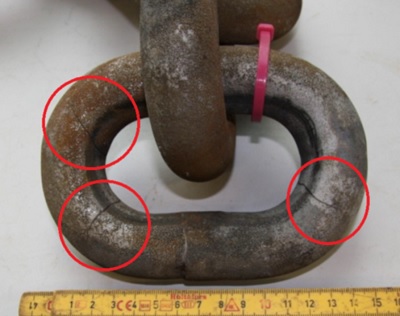 The Maritime and Coastguard Agency are issuing this safety bulletin to remind owners, employers, skippers and crew of UK fishing vessels of their responsibilities regarding health and safety following a number near misses, accidents, and a fatality – during lifting operations. Although applicable to all fishing vessels it is scallop dredgers that are of immediate concern. >click to read< -22:27
The Maritime and Coastguard Agency are issuing this safety bulletin to remind owners, employers, skippers and crew of UK fishing vessels of their responsibilities regarding health and safety following a number near misses, accidents, and a fatality – during lifting operations. Although applicable to all fishing vessels it is scallop dredgers that are of immediate concern. >click to read< -22:27
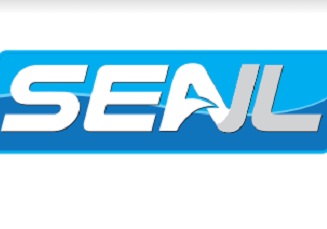
DFO and fishing vessel safety – A Damning Indictment of its safety culture
Fisheries and Oceans’ decision not to extend the halibut fishery in the Gulf of St. Lawrence for the province’s inshore harvesters who didn’t catch their quotas due to poor weather is a damning incitement of its safety culture, says Merv Wiseman, an outspoken search and rescue advocate. “DFO is telling fishermen if you don’t go to sea because of bad weather you’re going to lose your fish,”,,, “Putting extra pressure on fishermen to make decisions contrary to safety is a recipe for disaster that we’ve seen play out too many times.” A Transportation Safety Board report into the 2016 drowning of four Shea Heights fishermen found they took a risk in going out in questionable weather in order to land their weekly cod quota, and to recover fishing gear before deadline. >click to read< 07:34

Joe Gilbert: Wind turbine spacing plan inadequate for fishing safety
From the perspective of Connecticut’s commercial fishermen who provide over $53 million to our state’s economy, nearly 1,000 jobs and food on the table of countless consumers, I wanted to respond to the Nov. 19 Day article, “New England Wind Turbine Plan Proposed to Allay Concerns.,,, “This uniform layout is consistent with the requests of the region’s fisheries industry and other maritime users,”,,, It is unclear to me and other fishermen what industry requests these developers are responding to. >click to read< 11:10
AMSEA Updates “Beating the Odds: A Guide to Commercial Fishing Safety,”
 The seventh edition of “Beating the Odds: A Guide to Commercial Fishing Safety,” by Susan Clark Jensen and Jerry Dzugan of the Alaska Marine Safety Education Association, is hot off the presses, with updated information on survival at sea. The 250-page book tackles a wide range of issues, from reading the weather and handling fishing gear safely to fatigue, hydration and nutrition, putting out fires onboard and the importance of safe seamanship. Read the rest here 21:08
The seventh edition of “Beating the Odds: A Guide to Commercial Fishing Safety,” by Susan Clark Jensen and Jerry Dzugan of the Alaska Marine Safety Education Association, is hot off the presses, with updated information on survival at sea. The 250-page book tackles a wide range of issues, from reading the weather and handling fishing gear safely to fatigue, hydration and nutrition, putting out fires onboard and the importance of safe seamanship. Read the rest here 21:08
Fire at Sea – Acute awareness of the possibility of a fire occurring at any time is important for any workboat operator.
 That’s because a workboat is “a floating ignition source,” according to Randy Hyde, the senior firefighting instructor at Fremont Maritime Services, a Seattle marine safety and survival training company. “There are tons of ignition sources on board, especially when dealing with machinery spaces and engine rooms.” At Fremont’s training center, AFG Flameguard USA’s DSPA-5 was tested in their 102′, two-level, multispace mock ship where it put out a simulated engine-room fire in seven seconds and a galley fire in six seconds. Read more here 14:42 AFG Flameguard website
That’s because a workboat is “a floating ignition source,” according to Randy Hyde, the senior firefighting instructor at Fremont Maritime Services, a Seattle marine safety and survival training company. “There are tons of ignition sources on board, especially when dealing with machinery spaces and engine rooms.” At Fremont’s training center, AFG Flameguard USA’s DSPA-5 was tested in their 102′, two-level, multispace mock ship where it put out a simulated engine-room fire in seven seconds and a galley fire in six seconds. Read more here 14:42 AFG Flameguard website
A safety program created for fishermen and delivered by fishermen test piloted in British Columbia

FISH SAFE has helped to move forward a culture of safety and helped fishermen in British Columbia to see where the safety shortcomings are on their own vessels. But the idea has always been that this is a program that could benefit the fishing industry in all of Canada. With this in mind, this week and part of next week, a version of the program – Safest Catch Nova Scotia – is undergoing a pilot project on the East Coast of the country, with some training and execution of the program happening in southwestern Nova Scotia, including in Yarmouth and Digby counties. more@ycvanguard www.fishsafebc.com 14:16
Are you a survivor like John Aldridge?

 July 24, 2013 – John Aldridge, a crewmember of the 44-foot lobster vessel Anna Mary was last seen aboard the boat during his watch relief at 9 p.m., Tuesday, while the vessel was underway off Montauk, N.Y. How many times have you read of or heard of a fisherman going overboard, only to watch an unsuccessful chain of events involving fruitless search and rescue operation’s to see them become possible recovery operation’s, and predictably, abandoned after a period of time, dictated by estimates of rate of survival and sea conditions? Way too many. Scroll down the page to continued here
July 24, 2013 – John Aldridge, a crewmember of the 44-foot lobster vessel Anna Mary was last seen aboard the boat during his watch relief at 9 p.m., Tuesday, while the vessel was underway off Montauk, N.Y. How many times have you read of or heard of a fisherman going overboard, only to watch an unsuccessful chain of events involving fruitless search and rescue operation’s to see them become possible recovery operation’s, and predictably, abandoned after a period of time, dictated by estimates of rate of survival and sea conditions? Way too many. Scroll down the page to continued here
Newfoundland fisherman drowns after falling from boat
The Mounties say officers were called to the Bonavista area on Saturday after reports that a man had fallen from a boat while fishing for cod. Police say he was not wearing a life jacket. continued@chronicleherald
Douglas Ward Wickens fell off a fishdragger. If Ward had been wearing a PFD…
Douglas Ward Wickens fell off a fishdragger, the Silver Angel, on May 3, 2011, about nine kilometers south of Cape Sable Island. His captain, the only other person aboard that night, tried to reach him with a gaff, then threw a life ring towards  him and went for a longer rope. When he came back, Wickens was gone. continued@novanewsnow
him and went for a longer rope. When he came back, Wickens was gone. continued@novanewsnow
After son’s death, father criticizes lack of fishing industry oversight
![]() The 66 Washingtonians who died on the job in 2012 were honored at a memorial on Tuesday. A memorial bell was rung 66 times, once for each victim who died of a job-related illness or injury. But the father of a 22-year-old commercial fisherman who died says not enough has been done; he voiced frustration over what he called a lack of government oversight of the fishing industry. continued
The 66 Washingtonians who died on the job in 2012 were honored at a memorial on Tuesday. A memorial bell was rung 66 times, once for each victim who died of a job-related illness or injury. But the father of a 22-year-old commercial fisherman who died says not enough has been done; he voiced frustration over what he called a lack of government oversight of the fishing industry. continued
MAN UP!!! NIOSH to fishermen: wear your PFD
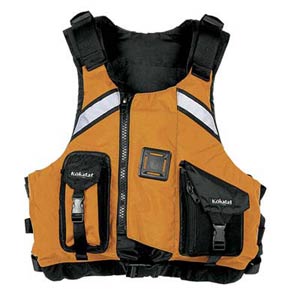 thecordovatimes.com – It’s not one size fits all, but there are enough styles of personal floatation devices out there now to fit every commercial fish harvester’s needs, says Ted Teske of the National Institute for Occupational Health and Safety. “Our message to fishermen is find something that works,” Teske told participants in COMFISH Alaska 2013 in Kodiak on April 12. To help them do that NIOSH worked with several dozen commercial fishermen in Alaska who volunteered to wear a variety of PFDs for 30 days and complete an evaluation form for each one. continued
thecordovatimes.com – It’s not one size fits all, but there are enough styles of personal floatation devices out there now to fit every commercial fish harvester’s needs, says Ted Teske of the National Institute for Occupational Health and Safety. “Our message to fishermen is find something that works,” Teske told participants in COMFISH Alaska 2013 in Kodiak on April 12. To help them do that NIOSH worked with several dozen commercial fishermen in Alaska who volunteered to wear a variety of PFDs for 30 days and complete an evaluation form for each one. continued
The QUIKSLING – New life-saving device to be unveiled at Skipper Expo
An innovative new life-saving device developed by a former Gardenstown fisherman will be on display for the first time at the Skipper Expo Int. Aberdeen 2013 fishing show. continued
Your job is Dangerous. The public health of fishing vessel winches. (Seriously!)
 We in public health—and probably much of the public—tend to think that our field is about large-scale prevention and intervention efforts on behalf of the population’s well-being. Think anti-smoking laws and regulations, battles over soda size, and fights over the Affordable Care Act. But most of what public health does is, in fact, fairly mundane. It thinks about the ways our daily routines can either harm us or make us healthier— in our eating habits or in our jobs, for example—and then finding ways capitalize on that information. Take the fishing vessel winches. continue reading
We in public health—and probably much of the public—tend to think that our field is about large-scale prevention and intervention efforts on behalf of the population’s well-being. Think anti-smoking laws and regulations, battles over soda size, and fights over the Affordable Care Act. But most of what public health does is, in fact, fairly mundane. It thinks about the ways our daily routines can either harm us or make us healthier— in our eating habits or in our jobs, for example—and then finding ways capitalize on that information. Take the fishing vessel winches. continue reading
Cape fishermen learn skills in emergency drills
Orange smoke billowed across the restaurant’s parking lot as fishermen practiced using flares, a critical rescue tool. “Most people don’t know how to use them properly or how to ignite them properly. They can be injured, they can be burnt if they aren’t properly trained,” said Ted Williams, a former commercial fisherman and now a Coast Guard certified drill instructor. One fisherman admitted that if he had received flare training, he likely wouldn’t have blown off his thumbnail in a flare accident 15 years ago. continued
Coast Guard stresses the importance of life jackets, proper sleep while crabbing
 The crabbing vessel Senja departed the Westport, Wash., marina at approximately 6 a.m. on Jan. 14, 2013, with four people aboard, for a week-long crabbing excursion. On Jan. 15, at approximately 6 p.m., the crew began hauling and resetting crab pots, working for several hours. The captain of the vessel commented that the weather was very mild. Though it was dark, there were 2-3 foot swells, no wind, and excellent visibility. A crewmember fell overboard, suddenly and unexpectedly, entering the water headfirst,,,,,Read more
The crabbing vessel Senja departed the Westport, Wash., marina at approximately 6 a.m. on Jan. 14, 2013, with four people aboard, for a week-long crabbing excursion. On Jan. 15, at approximately 6 p.m., the crew began hauling and resetting crab pots, working for several hours. The captain of the vessel commented that the weather was very mild. Though it was dark, there were 2-3 foot swells, no wind, and excellent visibility. A crewmember fell overboard, suddenly and unexpectedly, entering the water headfirst,,,,,Read more






 Fishing is one of the most dangerous jobs in the United States. Last year the Bureau of Labor Statistics ranked fishing as the second most dangerous profession, behind logging, based on the number of fatalities. Between 2000 and 2012, there were 623 commercial fishing related deaths nationwide, according to a database run by the National Institute for Occupational Health and Safety. NIOSH has been studying the incidents that led to those deaths carefully, and believes hundreds of lives might be saved if more people would wear their PFD’s. Read
Fishing is one of the most dangerous jobs in the United States. Last year the Bureau of Labor Statistics ranked fishing as the second most dangerous profession, behind logging, based on the number of fatalities. Between 2000 and 2012, there were 623 commercial fishing related deaths nationwide, according to a database run by the National Institute for Occupational Health and Safety. NIOSH has been studying the incidents that led to those deaths carefully, and believes hundreds of lives might be saved if more people would wear their PFD’s. Read 
 t of 2010 provision requiring all commercial fishing vessels operating more than three miles from the coast to have dockside inspections by Oct. 16, 2012, was extended to Oct. 15, 2015, by the latest 2012 act , which became law on Christmas Eve.
t of 2010 provision requiring all commercial fishing vessels operating more than three miles from the coast to have dockside inspections by Oct. 16, 2012, was extended to Oct. 15, 2015, by the latest 2012 act , which became law on Christmas Eve.






























